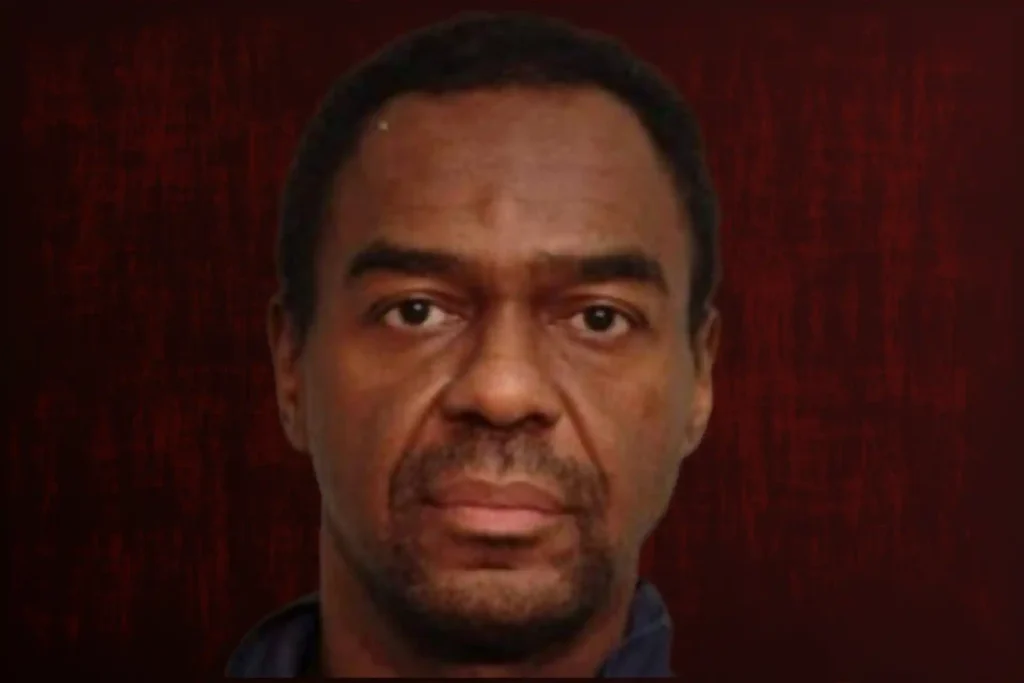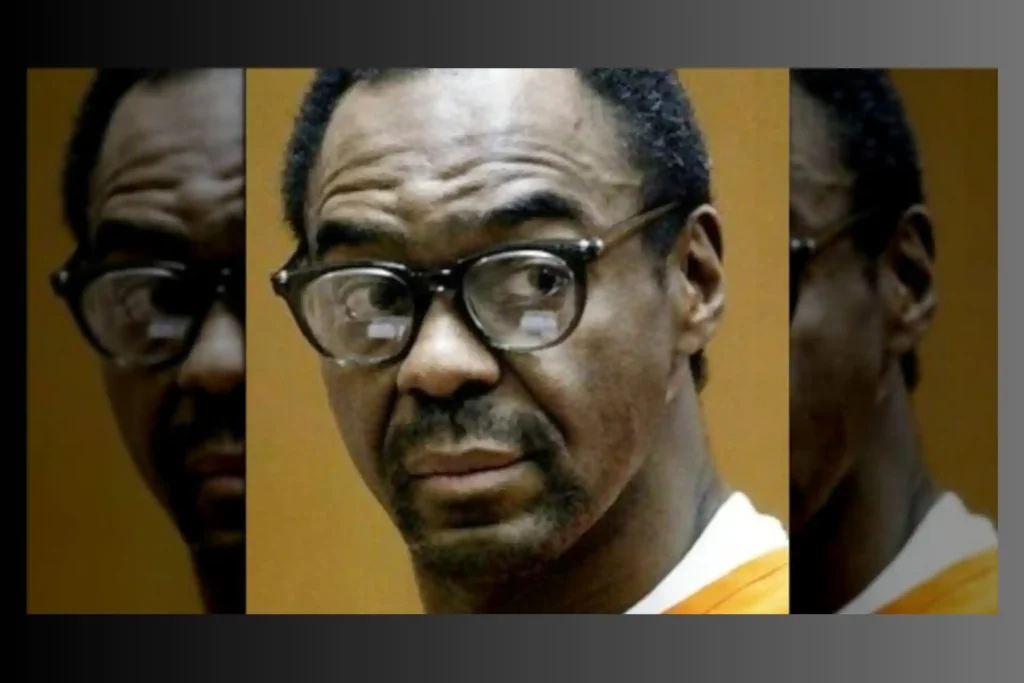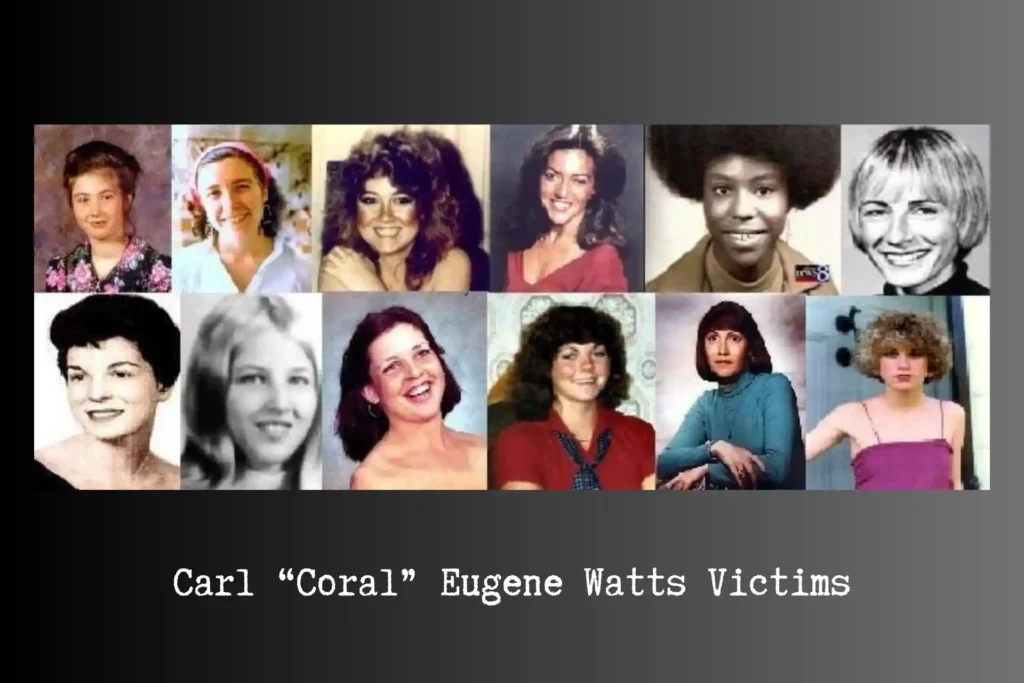Carl Eugene Watts, known infamously as the Sunday Morning Slasher, is one of America’s most chilling serial killers. His reign of terror spanned across the United States in the 1970s and 1980s, and he became notorious for his brutal murders, primarily targeting women. Watts, who was initially seen as a quiet, unassuming individual, shocked the nation when it was revealed that he was responsible for at least 13 known murders, though his true body count may never be fully understood. In this article, we will take a deep dive into his life, his crimes, and the legacy he left behind.
Table of Contents
A Troubled Beginning: The Early Life of Carl Eugene Watts
Born on November 7, 1953, in Killeen, Texas, Carl Eugene Watts’ early years were shaped by a turbulent family life. His father was often absent, and his mother was described as mentally unstable. These early experiences contributed to Carl Watts’ growing sense of isolation and emotional detachment. His childhood was marked by frequent moves and a lack of stability, and these factors seemed to have a lasting effect on his development. Carl Eugene Watts was known to be an introverted child, often spending time alone or in his thoughts. He was not known to have many friends, which may have fueled his sense of alienation and deepened his emotional struggles.
Before Coral Watts was born, in 1942, Richard was transferred to Killeen and assigned to Fort Hood Army Base because it was chosen as the site for the American Army’s Tank Destroyer Tactical and Firing Centre. Three days after his birth, they returned to West Virginia, where they had grown up, and a year later, Sharon, their second child, was born.
Coral Watts’ parents divorced when he was less than 2 years old due to an unsatisfactory marriage, and his mother raised him. In 1962, Dorothy Mae married Norman Caesar, a mechanic, with whom she had two daughters. The two moved to Inkster, Michigan where she found employment as a high school art teacher. Carl Watts disliked his new stepfather, which made it difficult for him to adapt to his new familial environment. Carl Watts claimed that he was referred to as a “mama’s boy” and that he often worried about losing his mother’s attention
As Carls Watts grew older, his behavior became increasingly erratic. However, behind this façade, Watts was harboring violent urges that would later manifest in his gruesome crimes.

The Chilling Pattern: How Watts Became the “Sunday Morning Slasher”
By the time he was 12, according to Watts, he began to relish his sleep-induced fantasies of torturing and killing girls and young women. Teenage Watts started stalking girls at this time, and it is thought that he killed his first victim before the age of 15.
He frequently received failing grades in school, and by the age of 16, he read only at a fourth-grade level. He was severely bullied at school as well. Police were able to identify 15-year-old Watts as a culprit in the assault on 26-year-old Joan Gave on June 29, 1969. While delivering newspapers on his route, Watts knocked on Gave’s apartment door. Watts beat Gave when she opened the door and abused her violently. He then continued on his delivery route as if nothing happened. Gave immediately contacted the authorities who apprehended Watts at his home. Coral Watts was ordered to undergo psychiatric treatment at the Lafayette Clinic in Detroit, a mental hospital.
During a psychiatric evaluation, Carls Watts was asked if his dreams and nightmarish visions disturbed him, he replied, “No, I feel better after I have one,” and claimed that they were not nightmares because “he enjoyed them.” He further elaborated that his motivation for assaulting Gave was because he “just felt like beating someone up.”
According to a psychiatric assessment, Coral Watts was revealed to have a mild intellectual disability with an intelligence quotient of 75 and to have a delusional thought process, and no evidence of psychosis. However, a police officer interrogating Watts after his arrest later stated that he appeared to be “very, very intelligent” with an “excellent memory.”Also, Watts’ psychiatrist later reported that Watts was an “impulsive individual who has a passive-aggressive orientation to life” and who is “struggling for control of strong homicidal impulses.”
He thought Watts posed a threat to society and hoped that the adolescent would benefit from outpatient therapy. He was discharged from the Lafayette Clinic on his 16th birthday and visited the facility nine more times for outpatient care throughout the ensuing years. During his time in various mental institutions, Watts was diagnosed with antisocial personality disorder.
Watts was one of many criminals from this era, which saw a closer look at the serial killers of the 1980s.
Introduction to Carl Eugene Watts: The Serial Killer of the 1970s and 1980s
Carl Eugene Watts, a who became notorious serial killer in the 1970s and 1980s. His crimes remained unsolved for years, casting a shadow of fear over many communities. Carl Eugene Watts confirmed kills took place when he was 20 in 1974, by kidnapping his victims from their homes, torturing them, and then murdering them. He attacked several different jurisdictions and even different states.

Most of his victims were thin, attractive, white women. Carl Eugene Watts’s victims ranged between the ages of 14 and 44. Watts murdered dozens of women between 1974 and 1982, and despite the many women he murdered, Carl Eugene Watts’s serial killer was not discovered for almost eight years.
The Psychological Profile of Cal Eugene Watts: A Serial Killer’s Mindset
A series of murders occurred, primarily targeting women. Watts’ killing spree is believed to have followed a distinct pattern. The killer’s chilling modus operandi reveals how he meticulously selected his victims, executed his attacks, and left unsettling similarities that ultimately led investigators to link the crimes to a single suspect.
- Victimology: Describes the types of women who were targeted and any commonalities between them (e.g., age, race, occupation).
- Killing Method: Analyzes how Watts committed the murders, such as strangulation, stabbing, or other methods.
We delve into the murders committed by Carl Eugene Watts, including his arrest, the identities of his victims, and his death in prison.
To better understand Watts’ mindset, you can explore the psychology of serial killers in our article on Understanding the Psychology of Serial Killers.
The Pattern of Murders: Watts’ Modus Operandi
On September 6, 1972, Zenaida Tomes, 20, was discovered in a field in Taylor, Michigan, adjacent to North Line Road and Lange Close. She had 45 stab wounds. Over the years, rumors have circulated that Tomes’ death may have been caused by Watts, who was present in the area at the time. However, she was taken from Detroit and murdered somewhere else, which is contradictory to Watts’ known modus operandi. She was last seen walking down John Daly Street in Inkster, Michigan on her way to babysit at her boyfriend’s house. Her body has never been found and no one witnessed her presumed abduction.
At 10:45 a.m. on October 25, 1974, Watts knocked on 23-year-old Lenore Knizacky’s apartment door. Watts called for “Charles,” which was the name of one of his siblings when she unlocked the door while the door was still chained. When she responded in the negative, she asked if he would like to leave a note, and she undid the chain lock and went to get the paper. Watts then attacked Knizacky and choked her into unconsciousness. Police were later alerted by Lenore, but they were unable to find her attacker.
Gloria Steele, 20, was tortured and killed by Watts on October 30, 1974. She attended Western Michigan University and was discovered with a crushed windpipe and 33 chest stab wounds. There were no witnesses other than Diane Williams, an apartment resident manager, who saw a black man “searching for Charles” strolling throughout the complex of apartments. When Watts saw her, he grabbed her, pushed her door open, and dragged Williams inside her apartment.
Her phone started to ring as the two were fighting, so she knocked it off the hook and yelled for help. Williams spotted the man getting into a tan Pontiac Grand Prix as she stood up and peered out the window after her attacker fled. The police assembled a line-up, and Williams and Knizacky recognized Watts, who had just been apprehended stealing plywood from the campus of Western Michigan University. For both the Knizacky and Williams cases, he was taken into custody and charged with assault and battery.
Similar in notoriety, Gary Ridgway has a haunting story detailed in our article on Gary Ridgway: The Green River Killer.
Carl Eugene Watts’ Victims
Watts’ reign of terror lasted from 1974 to 1982, during which he confessed to murdering. However, law enforcement and forensic experts believe that the true number of his victims could be much higher.
Here are some key details about his confirmed victims and their tragic deaths:
- 1974 – 14-Year-Old Girl in Michigan: Watts is believed to have murdered a 14-year-old girl in Michigan. The details of this victim’s identity remain unclear.
- 1980 – Woman in Houston, Texas: One of Watts’ victims was found in Houston, Texas, strangled to death, and sexually assaulted.
- 1981 – Another Woman in Houston: Another victim in Houston was found in 1981, with the same methods of strangulation and sexual assault.
Watts openly confessed to the brutal killings of Elena Semander, Emily LaQua, Anna Ledet, Yolanda Gracia, Carrie Jefferson, Suzanne Searles, and Michele Maday between February and May 1982, but shockingly, he was never prosecuted for the majority of these heinous crimes due to a controversial legal deal.

Arrest and Capture of Carl Eugene Watts: The End of a Killing Spree
Carl Eugene Watts was arrested in 1982 after he was caught attempting to kill a woman who survived and provided crucial details to the police. Following his arrest, Watts officially confessed to the murders of 13 women but later claimed he had killed 40 women and also implied that there were more than 80 victims in total.
- His Confessions: Watts confessed to several murders during his time in custody, though his confessions were often vague, making it hard to fully verify all of them.
- The Role of Survivors: Several women survived his attacks and helped police catch him by providing critical details, including descriptions of Watts’ appearance and the car he drove.
For a broader understanding of crime in America, explore the dynamics of group behavior in our article on Most Famous Cults in American History.
Watts’ Death in Prison
Carl Eugene Watts was convicted of multiple murders in 1984 and sentenced to life in prison. He spent the rest of his life incarcerated in Texas. Coral Watts serving his life sentence in prison. He died of prostate cancer on September 21, 2007, in a Jackson, Michigan hospital. His death, due to natural causes, marked the end of a criminal career that spanned nearly a decade.
Related Crime Stories
- Top 20 Serial Killers Zodiac Signs
- Junko Furuta: A Shocking Tale of Suffering and Justice
- Aileen Wuornos: ‘Damsel of Death’ Serial Killer
- The Chilling Case of Ben Doberman Serial Killer
Conclusion
Carl Eugene Watts, also known as the “Sunday Morning Slasher”, left a dark legacy of terror across multiple states. Responsible for at least 13 confirmed murders between 1974 and 1982, Watts’ brutal crimes involved strangulation and sexual assault. Though he was arrested and sentenced to life in prison, many experts believe his actual victim count could be higher. Watts died in 2007, but his chilling nickname and the mystery surrounding his full body count continue to haunt criminal history.
FAQs
Why was Carl Eugene Watts called the Sunday Morning Slasher?
Five women were attacked and killed in the Detroit region over a year by a perpetrator who was dubbed by Ann Arbor newspapers as the “Sunday Morning Slasher”
How old was Carl Eugene Watts when he died?
Carl Eugene Watts died on September 21, 2007, at the age of 53. He was born on November 7, 1953, and passed away in prison while serving a life sentence for the murders he committed. His death was attributed to natural causes, although he had been suffering from health issues in his later years.
What was Carl Eugene Watts’ method of killing?
Watts typically killed his victims by strangulation. Many of his murders also involved sexual assault. He often targeted women who were alone or in vulnerable situations, making his attacks particularly difficult to prevent.
What happened to Carl Eugene Watts after his arrest?
After his arrest in 1982, Carl Eugene Watts was convicted of several murders and sentenced to life in prison. He was incarcerated in Texas and remained in prison until he died in 2007. Despite his confessions, he was not tried for all of his known victims due to a plea deal he reached with authorities.